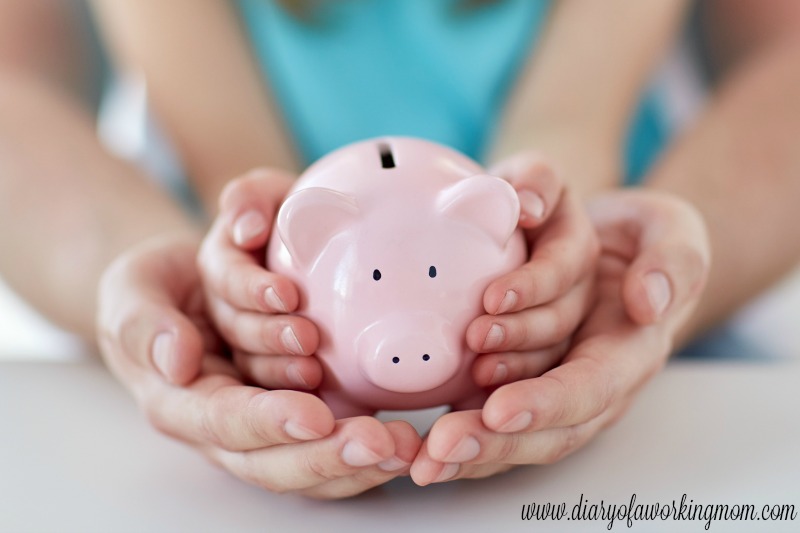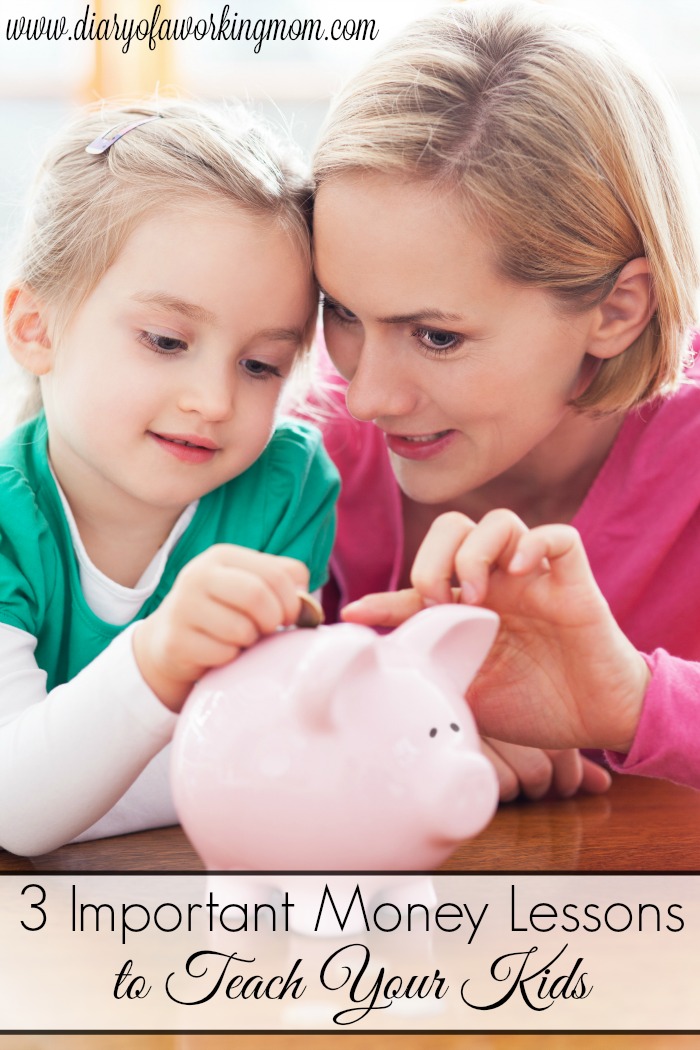Money can be a tough concept for kids, but it’s an important concept for them to learn so they can carry healthy financial habits into later life. While many parents think you need to wait until your child is older and has a part-time job to start teaching money lessons, there are plenty of money lessons that you can easily teach younger kids about earning, saving, and spending. Here are three important money lessons that I’m teaching my kids:

The value of a dollar. Sure, getting money from Aunt Suzy for a birthday or holiday is nice, but they’ll really value money they need to work for. Try setting up a small weekly or monthly allowance for your child and giving them a list of chores to do in order to earn the allowance. The allowance need not be huge, of course, just a a couple dollars or change to give an incentive. Have a neighbor that needs a small, odd job done like watering their plants of feeding a pet while they are away? Offer to take the job and have your child help. If the neighbor pays you for the work, offer part of the payment to your child.
Sometimes you have to save for what you really want. Good things come to those who wait…but often that’s easier said than done. The next time your child points to a toy on the shelf that they really want but is over and above the amount that Aunt Suzy gave them for their birthday, suggest saving the money until they have enough to buy the toy. After all, you don’t have to spend money as soon as you get it, and sometimes it’s better to hold on to it and wait for things you really want. As a reminder, print a picture of the item and put it next to their piggy bank so they think about it when putting money in to their piggy bank, or create a thermometer-like gauge so they can color in the thermometer and see themselves approaching their goal. Piggy banks like Money Savvy Pig or Moolah the Money Savvy Cow
can also help your kids keep an eye on what they’re saving. Encourage them as they set and reach their goals. They might even decide that the toy isn’t what they really wanted after a couple weeks of saving, which means one less unused toy on your floor (that’s a win-win!).
When it comes to spending, budgeting is important. It’s never too early to start teaching the importance of a budget. A great way to teach this skill is to go to the grocery store with your child (but try to avoid that dreaded race car cart that kids love but won’t turn for anything). Before you start shopping, tell your child what your budget is and what you need to buy. If your child is upper elementary school age or older, give them a calculator and tell them how much each item is as you add it to the cart, so they can do the math (this is how I learned to budget as a kid). As they inevitably try to add things to your cart that aren’t on your list, ask how much you’ve spent so far and if you have extra money for other items. When you return home, apply the family grocery shopping skills they learned in store to their own wants and needs.
What financial lessons do you teach your kids?

